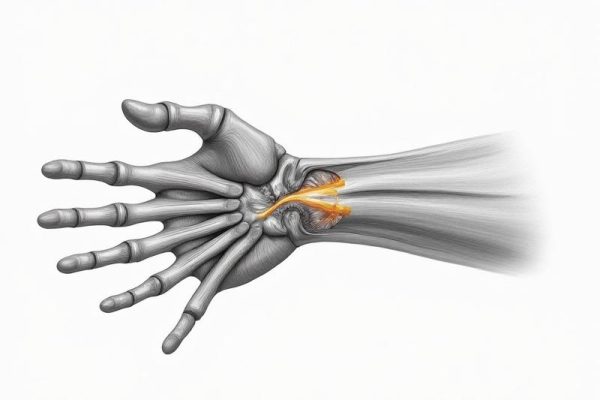```html
Understanding Progressive Muscle Relaxation: The Basics
Progressive Muscle Relaxation (PMR) is a technique developed in the 1920s by physician Edmund Jacobson. It involves systematically tensing and relaxing muscle groups to reduce physical tension and mental stress. The practice is grounded in the idea that physical relaxation can lead to mental calmness, making it particularly effective for those juggling demanding work environments. By focusing on one muscle group at a time—starting from the toes and moving upward—PMR helps individuals become more aware of bodily sensations and interrupt the cycle of stress-induced tension.

Work-related stress often manifests as clenched jaws, stiff shoulders, or cramped fingers, all of which PMR addresses. Unlike quick fixes like caffeine or screen breaks, PMR offers a structured approach to releasing chronic tension. Studies from the American Psychological Association highlight its efficacy in reducing anxiety and improving concentration, making it a sustainable tool for professionals. The beauty of PMR lies in its simplicity: no equipment or extra time is needed—just a quiet space and a few minutes of intentional practice.
Why Desk Jobs Breed Chronic Tension
Modern work cultures, especially desk-bound roles, create perfect conditions for muscle tension. Hours of sitting, poor ergonomics, and repetitive motions strain specific muscle groups. The trapezius (upper back), cervical spine (neck), and forearm flexors are common culprits. Add to this the psychological stress of deadlines and multitasking, and the body’s fight-or-flight response keeps muscles in a semi-contracted state. Over time, this leads to conditions like “tech neck” or tension headaches.
The sedentary nature of desk work also reduces blood flow to muscles, exacerbating stiffness. Unlike physical labor, where movement is varied, desk jobs often lock the body into static postures. PMR counteracts this by reintroducing intentional movement and relaxation. A 2022 study in the Journal of Occupational Health found that employees who practiced PMR twice daily reported 30% less muscle pain and 20% higher productivity. Recognizing these triggers is the first step toward integrating PMR into a daily routine.
A 10-Minute PMR Routine for Busy Professionals
Begin by sitting comfortably, feet flat on the floor, and hands resting on your thighs. Close your eyes and take three deep breaths. Starting with your feet, curl your toes tightly for 5 seconds, then release. Notice the contrast between tension and relaxation. Move upward to your calves, thighs, glutes, and core, repeating the tense-release pattern. For the upper body, clench your fists, tighten your forearms, biceps, and shoulders, then let go. Finish by scrunching your facial muscles before relaxing them completely.

This routine can be done discreetly during a coffee break or between meetings. The key is to focus on one muscle group at a time and avoid rushing. If 10 minutes feels too long, start with a 5-minute version targeting the neck, shoulders, and hands—areas most affected by desk work. Consistency matters more than duration; even brief daily practice can rewire the body’s stress response over time.
Making PMR a Seamless Part of Your Workday
Integrating PMR into a busy schedule requires creativity. Pair it with existing habits: practice deep breathing during a commute, tense-relax your calves during a Zoom call (with video off), or unwind your neck while waiting for a document to load. Use calendar alerts as reminders, but keep sessions flexible—even 90 seconds of focused breathing and shoulder relaxation can reset your nervous system.
Advocate for a workplace culture that prioritizes mental health. Share PMR techniques with colleagues or propose “wellness minutes” during team meetings. Employers increasingly recognize that stress reduction tools like PMR lower healthcare costs and absenteeism. By framing PMR as a productivity booster rather than a downtime activity, professionals can normalize its use without stigma.
The Science of PMR: How It Rewires Stress
PMR works by activating the parasympathetic nervous system, which counteracts the stress-induced “fight or flight” mode. When muscles tense and relax, the brain receives signals of safety, slowing the heart rate and lowering cortisol levels. Neuroimaging studies show that PMR increases activity in the prefrontal cortex, enhancing emotional regulation. Over time, this practice reduces the amygdala’s hyperactivity, making individuals less reactive to stressors.
Research also highlights PMR’s role in improving sleep quality—a common casualty of work stress. By releasing physical tension before bedtime, professionals fall asleep faster and experience deeper rest. This creates a positive cycle: better sleep leads to clearer thinking, which reduces daytime stress and the need for PMR. It’s a self-reinforcing tool for long-term resilience.
Real Stories: How PMR Transformed Work Lives
Take Maria, a software developer who battled migraines from hours of coding. After learning PMR, she began practicing hand and neck exercises every hour. Within weeks, her migraines decreased from weekly to monthly. Then there’s James, a project manager who used PMR to stay calm during high-stakes presentations. By relaxing his diaphragm beforehand, he spoke more confidently and avoided his usual stomach knots.
These stories underscore PMR’s adaptability. Whether you’re a teacher grading papers late or a nurse on your feet all day, tailoring the practice to your pain points yields tangible results. The common thread? Consistency and self-compassion—missing a day isn’t failure, just a chance to begin again.
Tools to Elevate Your PMR Practice
While PMR requires no special tools, apps like
Calm
or
Headspace
offer guided sessions for beginners. Wearables like the Apollo Neuro wearable use vibration to enhance relaxation cues. For the tech-averse, a simple timer app with 5-minute reminders can prompt muscle checks. Ergonomic accessories like lumbar cushions or adjustable desks also complement PMR by reducing baseline tension.
Experiment to find what works for you. Some thrive with structure, while others prefer intuitive practice. The goal isn’t perfection but progress—transforming PMR from a chore into a cherished ritual that sustains both career and well-being.




